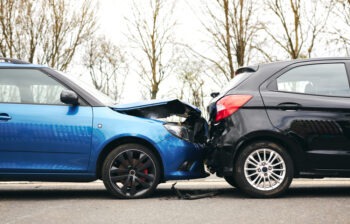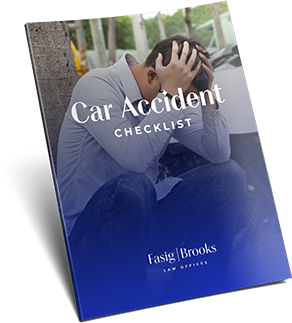
Determining liability for a car accident is complicated, even for an experienced attorney. But in a car accident, when backing up, things can get even more confusing. Most of these accidents can happen when a driver backs up recklessly. However, there are some circumstances when other parties can be at fault.
Victims of car accidents while backing up can be yet entitled to claim damages. And it may be necessary when medical bills from the accident start coming. In those cases having a car accident attorney by their side can be the best way for them to pursue damages from the liable parties.
Is the Driver Backing Up Always at Fault?
When asking who is at fault in a car accident when backing up, most people will say the driver who was reversing at the time of the accident. However, this is not always the case. An experienced car accident attorney can help you determine if you are liable for the accident and which damages you are entitled to pursue.
For instance, the other driver can be liable if they did not have the right of way at the moment of the accident or if they were coming out from a driveway.
How does a Lawyer Determine Liability for a Car Accident When Backing Up?
An experienced attorney can conduct an investigation to determine how likely the other driver was at fault. They can find hard-to-get evidence, such as CCTV camera footage, police reports, or interview witnesses. A car accident attorney will also help you present your case to an insurance company or jury.
Presenting a solid case is essential to get the damages you deserve. And your lawyer can take care of the legal part while you recover from injuries.
Does the Right of Way Matter in a Backing-Up Car Accident?
Determining who had the right of way at the moment of the accident is one of the best ways your lawyer can prove someone else’s liability. According to law, only one car can have the right of way at a time. And in most car accidents, the driver without the right of way will be considered liable.
However, there are exceptions to this rule, for instance, when the driver with the right of way was texting, driving under the influence, or otherwise distracted.
What Should I Do After a Car Accident While Backing Up?
The first thing is getting immediate medical treatment after the accident. That is an important step since many insurance companies can say your lack of medical care was the reason for your actual condition. In addition, having the other driver’s contact information and witness statements can also benefit your legal claim.
If you can move after the accident, you can take pictures or videos with your cell phone. Take the other cars involved, their plates, the road, your injuries, and any other relevant factor, such as a hole in the road or a broken traffic light.
Who Is Liable for a Backing-Up Accident in a Parking Lot?
Backing-up accidents are common in parking lots, and liability usually depends on the situation. For instance, if you were hit by a car backing up from a parking space, they are responsible for any damages. Still, if the two vehicles were backing simultaneously, it may be necessary to check CCTV footage to determine who is at fault.
Your attorney can make that happen, but they can also help you find more evidence to support your claim. Even if you are partially liable, an experienced legal firm can help you recover at least a percentage of the damages.
Can I Pursue Damages If I am Partially Liable for the Accident?
Different states have different laws to determine who can claim damages. Florida, for instance, follows a “modified comparative fault” rule, which means victims are entitled to damages even if they are partially liable for a car accident while backing up.
However, the final amount a victim may get will be diminished depending on their responsibility percentage. For instance, if your damages are worth $100k but you are 20% liable for the accident, that will also diminish your compensation by 20%—settling the final compensation in $80k. Talking to your attorney is the best way to know how much damage you can get.
How Much Time do I Have to Sue for a Backing-Up Car Accident?
That will depend on the State in which the accident happened and their statute of limitations. For example, in Florida, victims have up to four years to file a claim for damages for a car accident, including backing-up accidents. However, some factors can alter this time frame.
Your car accident attorney can determine the best time to start a legal process and help you file a claim promptly. However, it is important to notice this is a rigid time frame, and if you do not take legal action in time, you can lose your chance to claim damages for good.
What Damages Can I Claim for a Backing-Up Car Accident?
Damages are meant to give the victims back everything the accident took away from them. But damages are also meant to help victims overcome a traumatic life event, such as a car accident. And facilitate them to get the rehabilitation they need. Since every accident is different, there is no simple way to determine damages. However, our attorneys tend to recover damages for our clients that cover the following:
- Emergency services
- Hospitalization
- Surgeries
- Rehabilitation therapy
- Damage to your property
Your attorney can look at your case carefully to determine which damages you are entitled to and how to file a claim to get compensation.
Can a Lawyer Tell Who Is at Fault in a Car Accident When Backing Up?
A car accident attorney can help you determine who is liable for the accident you had. But they can also help you find evidence to support your claim, interview witnesses, and calculate the right amount of damages you deserve to rebuild your life after a car accident.
Florida victims facing expensive medical bills, car damage, and an uncertain future after an accident should contact Fasig Brooks immediately. Our attorneys can answer your questions and explain your legal rights in a first consultation free of charge.



